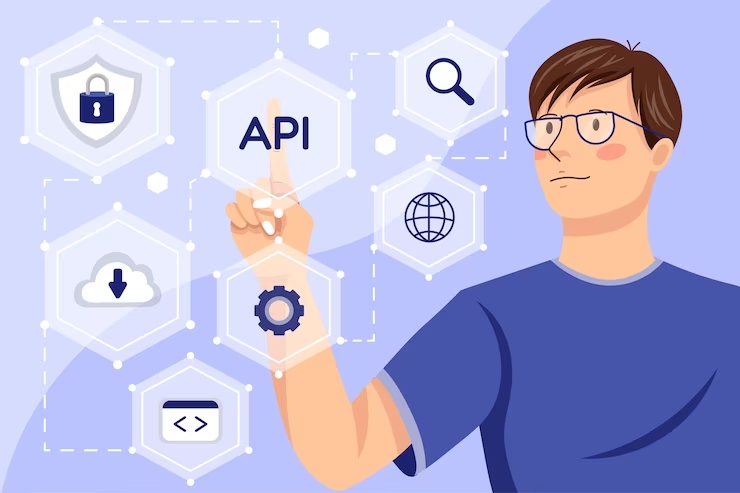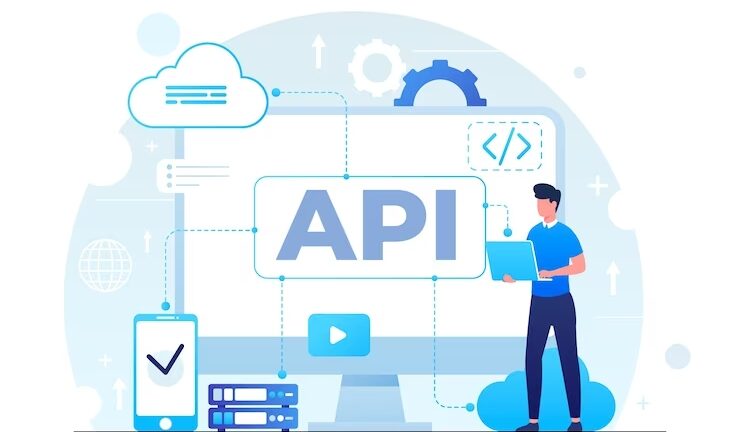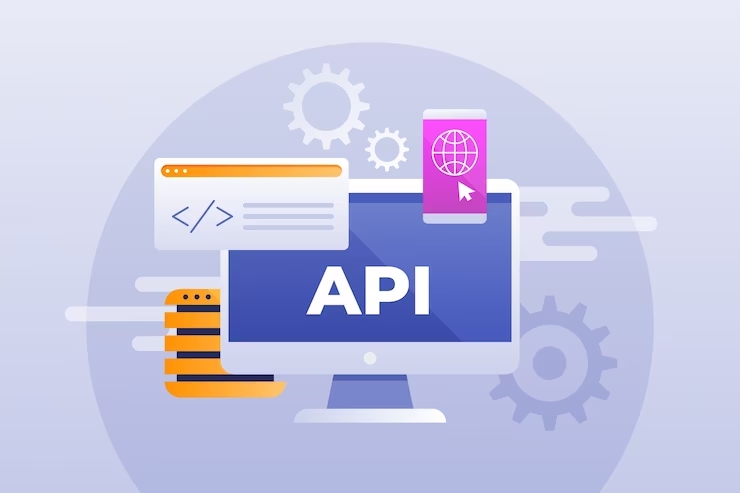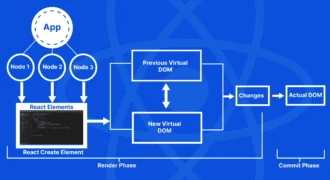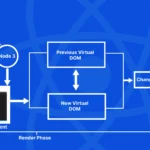Exploring Different Types of APIs for Mobile App Integration
- 1 What are APIs?
- 2 Role of APIs for Mobile App Integration
- 2.1 Web APIs
- 2.1.1 Benefits of Web APIs
- 2.1.2 Use Cases
- 2.2 Native APIs
- 2.2.1 Benefits of Native APIs
- 2.2.2 Use Cases
- 2.3 Third-Party APIs
- 2.3.1 Benefits of Third-Party APIs
- 2.3.2 Use Cases
- 2.4 Social Media APIs
- 2.4.1 Benefits of social media APIs
- 2.4.2 Use Cases
- 2.5 Messaging and Communication APIs
- 2.6 Conclusion
In the fast-paced world of mobile app development, integrating various functionalities and services into applications has become a necessity. APIs act as intermediaries, allowing different software systems to communicate with each other, facilitating data exchange and functionality sharing.
API integration service plays a pivotal role in streamlining the process of integrating APIs into various software systems. With this service, businesses can seamlessly connect and interact with external services, databases, and functionalities through standardized interfaces.
This article explores the different types of APIs available for mobile app integration, highlighting their benefits and use cases.
What are APIs?
API stands for Application Programming Interface. In uncomplicated terms, an API is a set of protocols and tools that permits different software apps to commune and interact with each other. It defines how different software components should interact, what data can be exchanged, and what operations can be performed. Also, API integration service acts as a facilitator, ensuring smooth communication and data exchange between different applications.
Role of APIs for Mobile App Integration
The role of APIs in mobile app integration is to enable seamless communication and integration between different software systems. APIs provide a standardized interface that allows mobile apps to interact with external services, databases, or functionalities. By incorporating APIs into mobile app development, developers can leverage the power of social media platforms, payment gateways, cloud storage services, IoT devices, and more. They facilitate data exchange, enable access to remote resources, and allow apps to leverage the capabilities of other software systems.
Web APIs
Web APIs, also known as HTTP APIs or RESTful APIs, are one of the most common types used in mobile app development to hire mobile apps developers. These APIs utilize the HTTP protocol to enable communication between a mobile app and a web server. Web APIs typically expose resources and functionality through endpoints, accessible via URLs. They enable mobile apps to fetch and manipulate data from remote servers, such as retrieving user information, sending requests, or updating data.
Benefits of Web APIs
- Easy to implement and widely supported.
- Platform-independent, making them suitable for various mobile operating systems.
- Allow access to a wide range of web services and online databases.
- Scalable and can easily hold a vast number of instantaneous requests.
- Can be secured using authentication mechanisms like API keys or OAuth.
Use Cases
- Social media integration (e.g., Facebook, Twitter, Instagram) to retrieve user profiles and post updates.
- Payment gateway integration (e.g., PayPal, Stripe) for processing transactions securely.
- Weather service integration to display real-time weather data in the app.
- Email service integration (e.g., Gmail, Outlook) for sending and receiving emails within the app.
Native APIs
Native APIs are specific to a particular mobile platform, such as iOS or Android, and provide access to the device’s underlying features and capabilities. These APIs are exposed by the operating system and allow developers to access hardware components, system services, and native functionalities. Native APIs offer direct integration with the mobile device, enabling apps to utilize device-specific features like camera, GPS, accelerometer, contacts, and more.
Benefits of Native APIs
- Provide access to a wide range of platform-specific functionalities.
- Offer high performance and seamless integration with the mobile operating system.
- Enable developers to create feature-rich, platform-native experiences.
- Utilize hardware acceleration for resource-intensive operations like image processing or gaming.
Use Cases
- Utilizing the camera API for capturing photos or recording videos within the app.
- Accessing GPS data for location-based services and navigation apps.
- Integrating biometric authentication (fingerprint, face recognition) for enhanced security.
- Leveraging push notification APIs to send real-time updates and notifications to users.
Third-Party APIs
Third-party APIs are developed and maintained by external organizations, allowing mobile app developers to integrate additional services and functionalities into their applications. These APIs are designed to offer specific capabilities, often targeting a particular domain or industry. Third-party APIs offer a cost-effective and time-efficient way to leverage existing services without reinventing the wheel.
Benefits of Third-Party APIs
- Access to specialized services and functionalities without extensive development efforts.
- Can extend app capabilities and provide value-added services to users.
- Enable developers to tap into established ecosystems and platforms.
- Often come with comprehensive documentation, sample code, and support.
Use Cases
- Integrating mapping and geolocation services (e.g., Google Maps, Mapbox) for location-based apps.
- Implementing social login functionality using APIs like Google Sign-In or OAuth providers.
- Adding payment capabilities through third-party payment gateways (e.g., Braintree, Square).
- Embedding communication features like chat, voice, or video calls using APIs like Twilio or WebRTC.
Social Media APIs
Social media APIs, such as those provided by Facebook, Twitter, LinkedIn, or Instagram, allow mobile app developers to integrate social media functionalities into their applications. These APIs enable users to log in with their social media accounts, share content, retrieve user profiles, post updates, and interact with social media platforms directly from within the app.
Benefits of social media APIs
- Increased user engagement
- Simplified registration and login
- Enhanced user personalization
Use Cases
- Allowing users to share app content or achievements on social media platforms.
- Displaying social media feeds or user-generated content within the app.
- Enabling social login or registration options for users.
Messaging and Communication APIs
Messaging and communication APIs, such as those offered by WhatsApp, Telegram, or SendGrid, provide developers with the ability to incorporate real-time messaging, voice calling, video calling, or email capabilities into their mobile apps. These APIs enable users to communicate with each other or receive important notifications through various channels.
Benefits of Messaging and Communication APIs
- Real-time communication
- Seamless user experience
- Improved customer support
Use Cases
- Integrating chat functionalities for in-app messaging or customer support.
- Enabling voice or video calling features within the app.
- Sending transactional emails or notifications to users.
Conclusion
APIs are the backbone of mobile app integration. The versatility and flexibility of APIs in mobile app development enable developers to create innovative solutions that meet the ever-evolving needs of users in today’s digital age.
Understanding the different types of APIs available and their respective benefits allows developers to choose the most suitable options for their mobile app projects, resulting in feature-rich, interconnected, and user-friendly applications.
Notably, API integration service empowers businesses to unlock new possibilities, extend functionality, and enhance user experiences by leveraging the power of APIs.

